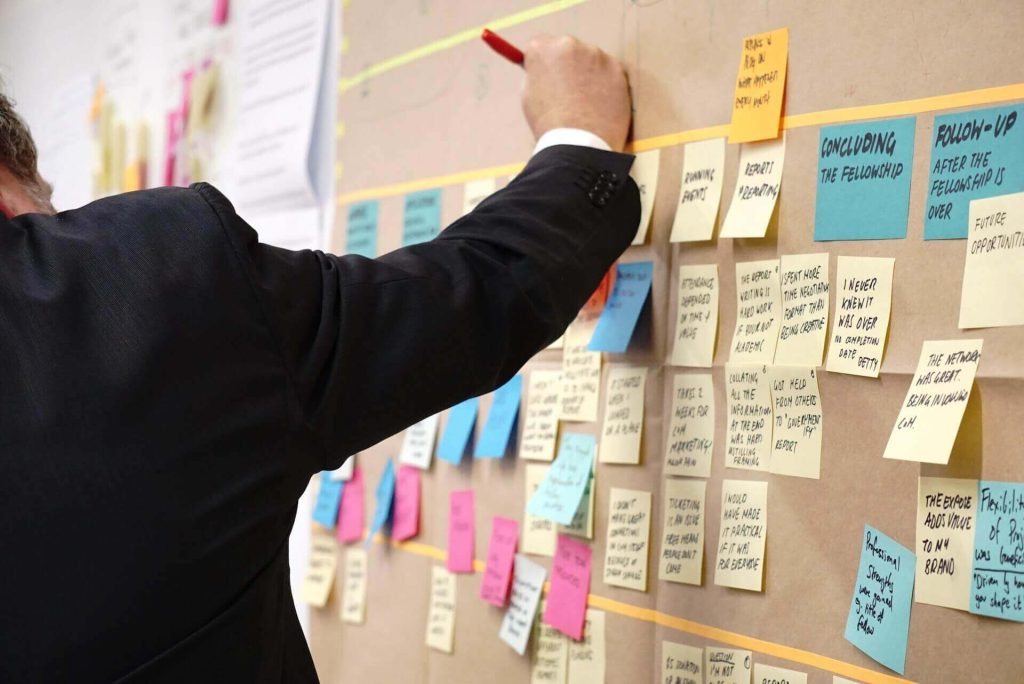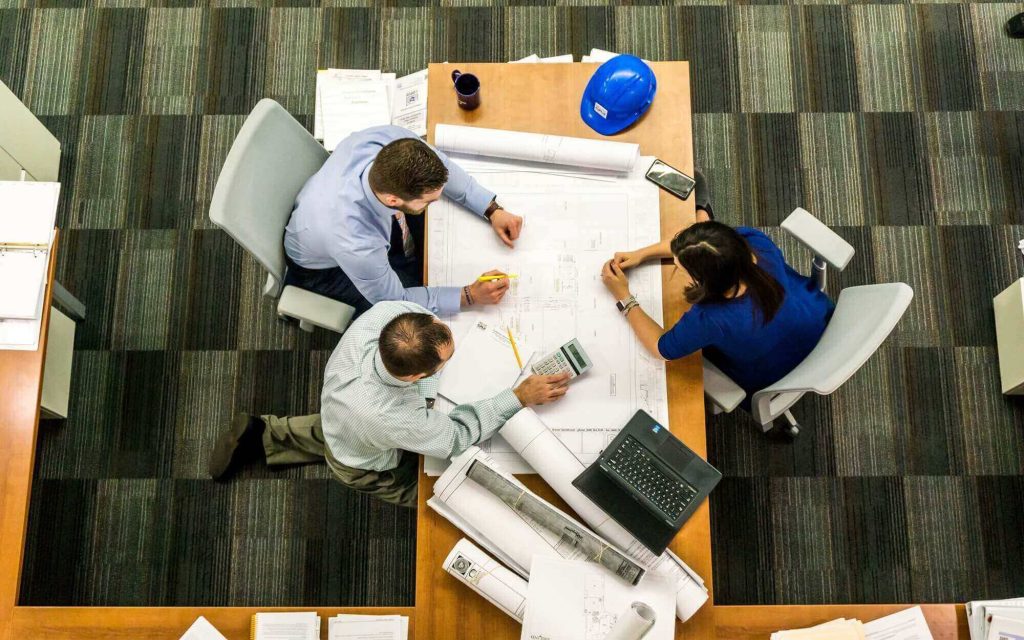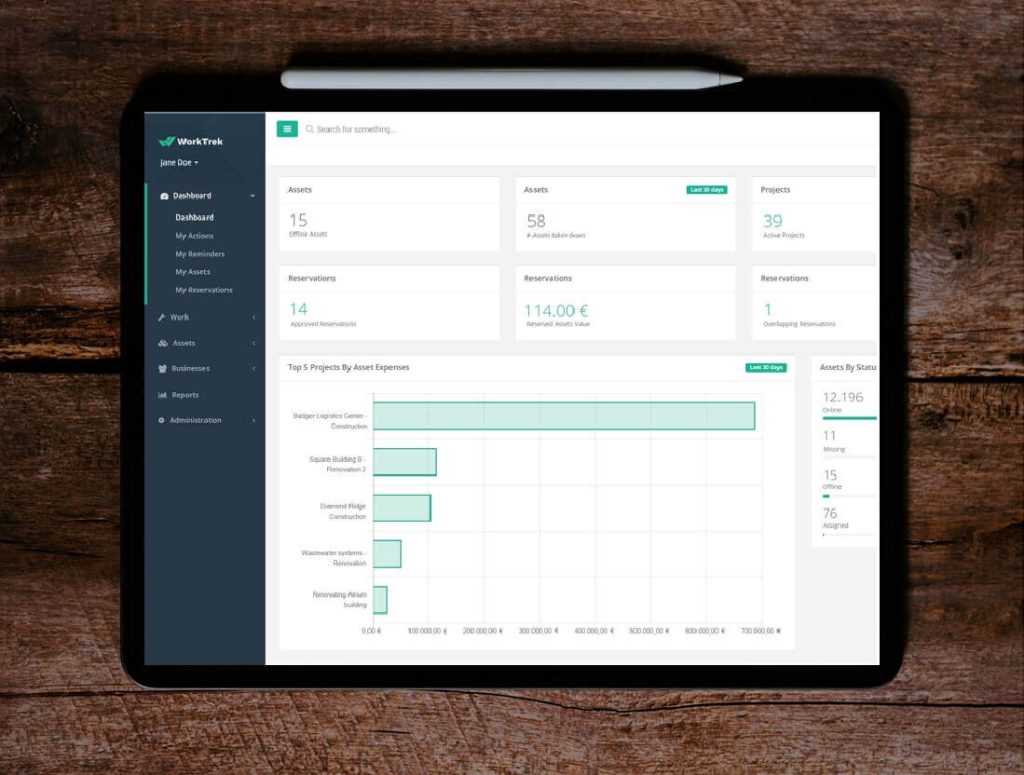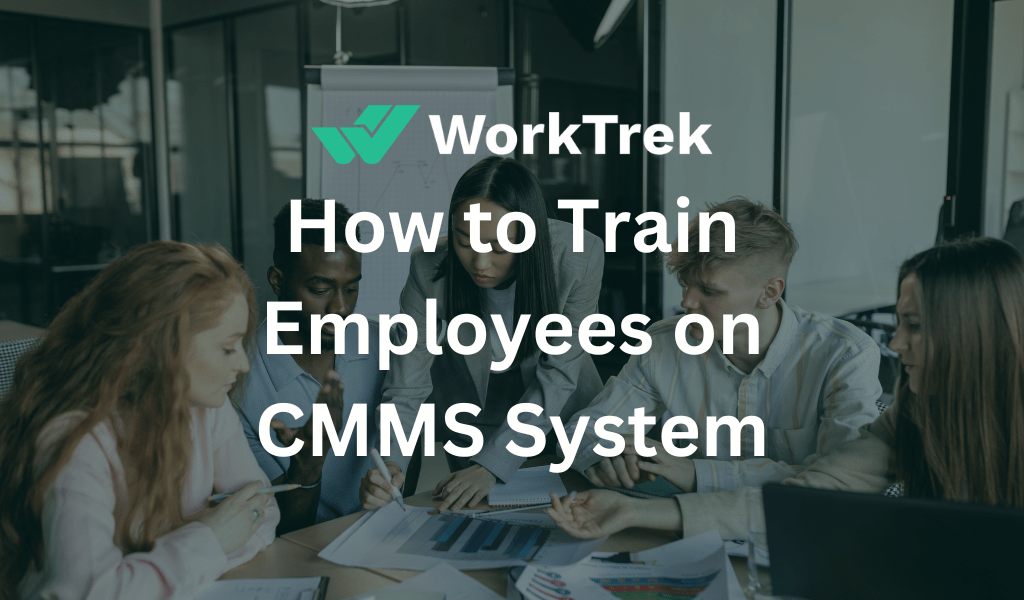Get a Free WorkTrek Demo
Let's show you how WorkTrek can help you optimize your maintenance operation.
Try for freeIn today’s fast-paced and technology-driven workplace, computerized maintenance management software (CMMS) has become an essential tool in streamlining maintenance operations, increasing productivity, and ensuring asset longevity. Since its introduction in the mid-1960s, CMMS has evolved from its original mathematics-based system for documenting, standardizing, and validating manufacturing processes to today’s powerful and sophisticated system capable of managing entire plant operations and facilities for use by maintenance and facilities departments in real-time management of multiple users. Future Market Insights conducted a historical analysis of the global CMMS market and found that the market will grow at a compound annual growth rate (CAGR) of 7.0% from 2018 to 2022, proving the attractiveness of CMMS to companies across all industries and business sectors. The growth rate over the next 10 years is 9.1%.

While these numbers are impressive, they do not reflect the high error rates in CMMS implementations, which can range from 50% to 70% depending on the reporting source. One of the main reasons for high failure rates is low user adoption. Employee resistance to change is a real barrier to CMMS adoption. Before we dive into how business owners can drive user adoption and the value CMMS software offers, we’ll take a closer look at the reasons behind employee resistance to adopting maintenance management software.
What Qualities are Required to Master the Operation of CMMS?
People wishing to learn how to use the CMMS maintenance solution must be rigorous and thoughtful. Faced with an unknown situation, they must be able to take a step back to find the right initiatives. Relationships can also be sought by employers. Their work is often part of a collaborative process with technicians. As part of a project, it will also be necessary to communicate with other stakeholders.
To be able to learn how to use CMMS, you will need to master certain basic computer skills. For example, it is useful to know how to operate a computer, a smartphone, or a tablet. The equipment on which the solution may be available must be understood by the person wishing to train in this type of solution. Using this type of tool also requires perfect mastery of the different functionalities of the software. Good data analysis skills can be essential for performing preventative maintenance operations. Managing costs, or even working times, can be essential within the framework of a project.

Why Learn to Use CMMS?
There are many reasons to train to learn how to use CMMS. For an employee, this represents the opportunity to improve their skills. By having this type of specific training, it will be possible to qualify for positions of responsibility. For people looking for work, mastering this type of work tool in the field of maintenance allows them to benefit from better employability. It will be possible to respond to offers requiring mastery of the functionalities of this professional software.
For companies, having employees trained in the use of CMMS makes it possible to better anticipate maintenance and repair operations. The software actually makes it possible to optimize this type of mission. It offers the possibility of managing the work of one or more people in the blink of an eye. Prevention also makes it possible to prevent situations where production is blocked due to machine breakdowns. Companies therefore have an interest in having people who have mastered this type of solution. Some of them also choose to offer in-house training to people working in this field. Others finance external training to ensure the skills development of their employees.

Reasons for Low User Acceptance of CMMS Systems
Resistance to change
Like most of us, we find comfort in what we already know and are good at. This does not apply to employees who are accustomed to traditional maintenance management methods that have been used for years. When a company first adopts a CMMS, it makes sense that maintenance personnel would be skeptical about the benefits of implementing a CMMS.
Not familiar with
Employees who are accustomed to using existing systems and processes may resist change because they feel comfortable and competent with their current processes. When introducing new technology, there is no avoiding the learning curve. When it comes to a CMMS, employees need to be familiar with new technologies, workflows, processes, and hardware. This can be intimidating and overwhelming, especially for those who are not tech-savvy.
Feeling a lack of control
If employees are not involved in the decision-making process or understand the reasons for technological change, they may lose control of their work environment. This can be highly destabilizing and lead to resistance to change because employees value a sense of autonomy and influence over their work.
Disrupt routines
Change often disrupts established routines and work patterns. Maintenance teams may resist new technology if they believe it will disrupt their daily tasks, resulting in a temporary loss of productivity and increased workload during the transition.

Doubts about the benefits of CMMS
If maintenance personnel do not see the direct, tangible benefits of adopting new technology, they may resist change. You may wonder whether new technology will actually improve efficiency, productivity, and overall work quality. Without a clear understanding of the benefits of CMMS, employees may view the change as unnecessary, onerous, and not worth learning.

Supercharge your maintenance game with WorkTrek CMMS!
Book a WorkTrek demo to see how a CMMS can help your business.
Try for freeInsufficient training and support
Insufficient CMMS training and support during the implementation phase of new technology can lead to disaster and negatively impact adoption. If employees feel they are not competent enough to use the technology or do not have access to the resources they need to learn and troubleshoot, they may resist changing out of frustration or fear.
Organizational culture
Some organizations may have a culture that is resistant to change or prefers traditional approaches. In this environment, employees may resist new technologies due to prevailing norms, attitudes, or resistance from influential individuals or groups within the organization.
Fear of losing your job
Maintenance personnel may worry that new technologies will automate the tasks they currently perform, resulting in job losses or reduced job security. They may also worry about their ability to adapt to new technology or acquire the skills they need to remain valuable in a changing work environment. For some employees, this can be a source of extreme anxiety and another reason to resist change.

Challenges of Training New Systems and Technologies
As we all know, every industry has endless new technologies covering every possible process. That’s why you take the time to research the features and benefits of different software and carefully choose the one that’s best for your business. You know very well that this technology will help your company grow and succeed, so your employees should see that too…right?
Well, not exactly.
Because many industries experience near-constant change, some employees experience frustration and burnout when learning new CMMS software or updating systems. Maybe it’s when people at the top step down and make changes that they feel good. Additionally, existing technical training sometimes needs to be updated to reflect changes in components, versions, or updates. They always strive to keep their training up to date, which can be a chore for employees.
Effective Ways to Maximize User Adoption and Value of Your CMMS System
We’ve identified the top reasons why employees resist using a solid CMMS solution, so here are actionable strategies companies can use to increase user adoption and promote successful implementations. These strategies enable maintenance departments to effectively utilize their CMMS systems and gain tangible benefits in less time.

The trainer must understand the software or system itself:
A solid change management training program requires trainers to be experts themselves before developing the training.
If a trainer doesn’t know the software or isn’t interested in the program, employees will know immediately.
When designing training, consult subject matter experts (either inside or outside the organization) as they can be very helpful in developing technical training. If you conduct training in person, choose your trainers carefully and provide them with the training they need to help employees take the next steps to implementation.
Define clear goals and benefits:
Clearly define the goals and benefits of implementing a useful CMMS system. Communicate these to all involved, emphasizing the positive impact of the software on their roles and the organization as a whole. By aligning user expectations with system functionality, business owners can inspire enthusiasm and motivation for adoption. Communicating information to all employees throughout the facility via email, text messages, and posters is an effective way to disseminate information while keeping all employees informed about the entire process.
Include key stakeholders:
Another way to prevent employee resistance is to involve key stakeholders early in the implementation process, including maintainers, supervisors, managers, and IT staff. Listen to their input, address their concerns, and provide early opportunities for training and collaboration. Now is also the time to identify and prioritize quick wins that demonstrate the immediate value of your CMMS system. By focusing on achievable goals and demonstrating expected early success, business owners can increase excitement, build trust, and encourage wider user adoption. Once key stakeholders gain buy-in by actively participating in the early stages of a CMMS implementation, they are better able to confidently drive user adoption, communicate the technology’s benefits, and ensure a smooth transition.

Comprehensive CMMS training and onboarding:
This is one area where entrepreneurs shouldn’t take shortcuts. Because employee buy-in is critical to a successful CMMS implementation, it is imperative to invest in a comprehensive training program that covers all aspects of the CMMS system’s functionality. Consider offering a combination of on-site, virtual, and self-paced training options to accommodate employees’ different learning styles and schedules. Ongoing support is also provided through documentation, FAQs, user forums, and a dedicated support team to assist users with any questions or challenges. Consider offering additional options for mobile access to your CMMS system through a dedicated app.
This is another way to reduce employee resistance by building trust with real-time capabilities. Mobile access allows users to access and update information or request assistance anytime and anywhere. This increases productivity, saves time, and proves the value of a CMMS. A friendly user interface makes it easier for users to interact with the system. Finally, continue to maintain open lines of communication with your users throughout the implementation, onboarding process, and beyond. Regularly inform your employees about system improvements, new features, and success stories. Users are encouraged to provide feedback, suggestions, and ideas for improvements. Actively incorporate user feedback into system updates and demonstrate that their input is valued and acted upon.
The phased approach to CMMS implementation:
Implementing the system requires a lot of planning and hard work. In addition to what has been stated, if the company has other existing systems, such as an enterprise resource planning (ERP) system or equipment monitoring system, these should be integrated before going live. This important step enables efficient data exchange and automation and eliminates redundant tasks, making the CMMS system more efficient and valuable to users. When it comes time to roll out a CMMS system company-wide, a pilot implementation is best.
This means initial deployment is limited to specific departments or areas within the facility. This approach allows all issues encountered along the way to be tested, refined, and resolved on a smaller scale. The advantage of fine-tuning the system during this pilot phase is that it reduces employee frustration from dealing with disruptive outages. The final step is to incorporate feedback from pilot users to further refine the system and optimize its usability before expanding the implementation to the entire organization.

Performance tracking and incentives:
As an ongoing practice, regularly utilize performance tracking mechanisms within the CMMS system to monitor key metrics such as asset availability, maintenance response times, and cost savings. The information provided by these audits provides objective feedback on the organization’s operations and productivity. It also provides insights into processes that may need improvement to improve workflow, resource utilization, preventive maintenance schedules, and more. Share performance reports with users and teams while recognizing and rewarding top performers. By introducing incentives and recognition programs, users will be motivated to continue using the CMMS and recognize the value it brings to their workplace.
Let them do it:
One of the best teaching methods when learning new software is to let employees try it themselves. Sure, you can show them how to do it and how to do it correctly, but there’s no reason not to give them practical experience. According to some statistics:
“People watching a software demo might be able to reproduce 10 percent of what was shown to them, calculate 20 percent, learn another 20 percent from their peers, and then completely forget the other half to learn slowly later, or not learn at all.”
It is best to follow a repetitive series of teaching methods. Just like learning a musical instrument or driving a car, if you do something over and over again, it will eventually become second nature to you. Give yourself about half an hour for them to use it and then do it another day. Spending a lot of time will only make them tired or bored.

Benefits of CMMS Training
When everyone completes a comprehensive training program on using a CMMS, you and your team can reap these four specific benefits:
Help everyone get used to using the software faster:
Not everyone is quick to accept and use new technologies introduced into the workplace, no matter how valuable they may be.
A formal user training program can educate your employees on the benefits of a CMMS program. In addition, they can experience concretely how the use of the software can help streamline work and improve processes. Because of this, they will be more open to accepting this new technology.
If your employees understand the value of the program, they will work hard to understand it so they can use it properly.

Let all users understand the functions of the program:
CMMS programs have a variety of features and tools that many new users find difficult to use or even impossible to find. If your team has used a different system before, this can present a doubly challenging situation.
If your team is trained before fully implementing the software, make sure they fully understand the interface and various tools before starting to use it.
From creating and managing work orders, maintenance schedules, and reports to organizing assets, your employees will know how to do it all after completing the introductory course.
With adequate training, your team will be fully prepared to use the software. You’ll feel safer and less stressed when using it.
Easier to use consistently:
Another benefit of providing CMMS readiness training for your employees is that you can ensure that everyone is on the same page when it comes to using the CMMS. If you let your team research and use the program themselves, they may develop specific procedures or techniques for using it. These methods can lead to errors that affect important data and, in turn, various operations.
To ensure that everyone follows the correct steps, instructions, and best practices for using a CMMS program, have a trainer conduct a proper tutorial before implementation. Not only do they reduce the frequency of errors, they help set your team up for consistency and success.
Promote the speed and efficiency of software implementation:
Learning the details of a CMMS system can take several days. It takes some people hours to master the steps required to perform a single function. Trying different technologies can lead to your employees making a lot of mistakes, and wasting time and resources.
Trying different technologies can lead to your employees making a lot of mistakes, and wasting time and resources.

Conclusion
From manufacturing to healthcare facilities, the goal of a CMMS is to increase efficiency, thereby saving time and costs. Use these savings to increase employee satisfaction. High employee satisfaction leads to employee loyalty. Satisfied employees will talk to their friends, which may even lead to hiring new employees. Overall, implementing a CMMS or making the most of your current CMMS is a great way to keep your employees happy and on your team.
With proper training, your team can avoid spending a lot of time guessing and making critical mistakes. You can learn to use the CMMS system correctly and efficiently in less time, which means your business can take advantage of all the benefits of the technology faster.









